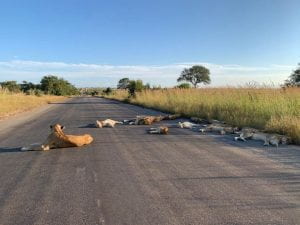By Emma Diamond
The coronavirus pandemic has affected many aspects of our daily lives, but it has also had a significant impact on climate change and the environment. Because of the closure of businesses and stay at home orders across the globe, air quality has improved, animals have reclaimed human invaded habitats, and waters have cleared.
Because of the coronavirus, improvements in air quality have been recorded in many countries across the globe. This has been the case particularly in places that have been hardest hit with the virus because these places have been forced to implement the most drastic closure measures. Many scientists have measured this decrease by observing concentrations of nitrogen dioxide, a gas emitted by cars, factories, and power plants. Nitrogen dioxide is a major component of smog. According to NASA, in China, concentrations of nitrogen dioxide decreased significantly between January 2020 (before restrictions were implemented) and February 2020 (after restrictions were implemented). This drop in NO2 was first recorded in Wuhan, China, where the coronavirus was first transmitted to humans, and then continued to be observed throughout the rest of the country. Although a decrease in air pollution usually takes place in China during this time of year because factories and businesses close for the Lunar New Year, the average amount of NO2 in China was 10-30% lower in 2020 than what has been observed during this time of year between 2005 and 2019. This suggests that a large amount of this decrease is because of coronavirus closures. China is not the only country that has recorded a decrease in nitrogen dioxide. When comparing two maps, one displaying the amount of NO2 in the air in the United States in March of 2019 and the other showing the amount in 2020, a subtle decrease is visible in most of the country. These regions include Ohio Valley, Mid-Atlantic, Southwest, and Northeast.
In addition to improvements in air quality, coronavirus stay at home orders have caused many wild animals to reclaim human invaded habitats. In Yosemite National Park, black bears, coyotes, and bobcats have the park to themselves with no humans around. A park ranger reports that she believes the animals are “having a party” or are extremely happy to reclaim the park. In Kruger National Park in South Africa, lions have reclaimed a road. An image shows many lions laying on the pavement in the park, a place where humans would usually drive their cars. Many animals have also been seen outside of national parks. A group of goats were seen roaming the streets of a town in Whales. In Boulder, Colorado, many mountain lions are taking to the streets. In Lopburi, Thailand, hungry macaque monkeys have been sparring with one another in the streets. These are only a few examples of the many sightings of animals in places they are usually not seen.
There have also been a few visible changes to the environment. In Venice, Italy, the murky waters of the canals are now clear. The Himalayas, a mountain range that stretches throughout Bhutan, Tajikistan, and Pakistan, are now visible.
Although the changes to the environment due to the virus are significant, they are short term. In order to continue to slow the effects of climate change, we must implement long term political action after business and factory closures and stay at home orders are lifted.
Sources:
https://earthobservatory.nasa.gov/images/146362/airborne-nitrogen-dioxide-plummets-over-china
https://www.washingtonpost.com/weather/2020/04/09/air-quality-improving-coronavirus/

